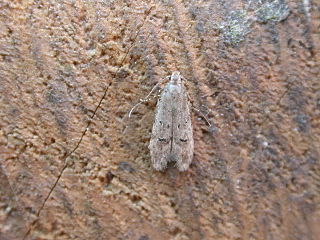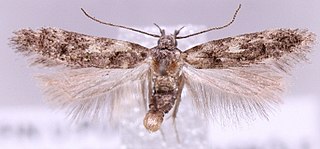
Teleiodes is a genus of moths in the family Gelechiidae.

Teleiodes vulgella is a moth of the family Gelechiidae. It is known from most of Europe, east to the southern Ural and the Volga region.
Teleiodes kaitilai is a moth of the family Gelechiidae. It is found in Russia. The habitat consists of taiga forests.

Teleiodes wagae, the hazel groundling, is a moth of the family Gelechiidae. It is found throughout Europe, east to Siberia.

Teleiodes luculella, the crescent groundling, is a moth of the family Gelechiidae. It is found from Europe to the southern Ural and Transcaucasia. The habitat consists of woodlands, including oak woodlands.

Teleiodes flavimaculella, the chestnut groundling, is a moth of the family Gelechiidae. It is widely but locally distributed in Europe, east to Siberia.
Teleiodes pekunensis is a moth of the family Gelechiidae. It is found in South Korea and Japan.
Teleiodes albiluculella is a moth of the family Gelechiidae. It is found on Crete.
Teleiodes brevivalva is a moth of the family Gelechiidae. It is found in northern Italy and Spain.
Teleiodes italica is a moth of the family Gelechiidae. It is found in Switzerland, northern Italy, southern France and Spain.
Teleiodes bradleyi is a moth of the family Gelechiidae. It is found in Korea.
Teleiodes paraluculella is a moth of the family Gelechiidae. It is found in Korea.
Teleiodes klaussattleri is a moth of the family Gelechiidae. It is found in Korea.
Teleiodes cyrtocostella is a moth of the family Gelechiidae. It is found in Korea.
Teleiodes flavipunctatella is a moth of the family Gelechiidae. It is found in Korea.
Teleiodes linearivalvata is a moth of the family Gelechiidae. It is found in South Korea and Japan.
Teleiodes excentricella is a moth of the family Gelechiidae. It is found in Libya, Armenia and Turkmenistan.
Teleiodes gangwonensis is a moth of the family Gelechiidae. It is found in central Korea.
Teleiodes hortensis is a moth of the family Gelechiidae. It is found in China.
Teleiodes murina is a moth of the family Gelechiidae. It is found in Korea and the Russian Far East.




